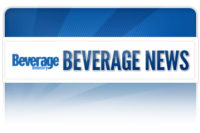![]()
Ethnic Marketing: Hispanics lead growth
by Jamie Popp
Continuing changes in
demographics in the United States can be
beneficial for marketers seeking new opportunities among thirsty consumers.
A better look at the Hispanic market was offered during BevExpo last month
in Tampa, Fla. Representing the largest ethnic-consumer base in the United
States, Hispanics account for high-volume beverage purchases in
predominantly mass merchandise outlets. However, there’s much more to
consider when targeting this growing market.
Currently outnumbering the total population of Canada,
the Hispanic population in the United States is expected to reach 42 million by 2007, and represent 21 percent of Americans by 2020.
The purchasing power of this burgeoning ethnic group continues to get
stronger, and statistics show that from 1996 to 2001 the average household
income for Hispanics increased 55 percent. Furthermore, current buying
power is more than $675 billion, according to Hispanic-market.com. In
addition to purchasing power, having an average of one additional person
per household, this group represents an important market segment for
beverage producers. While
they share beverage preferences with the average U.S. citizen and enjoy
products such as Coca-Cola and Sunny Delight, they also tend to consume
nectars and imported carbonated soft drinks, skewing toward
Hispanic-targeted brands such as Senorial Sangria and Jarritos, according
to Information Resources Inc., Chicago. The largest Hispanic consumer base
hails from Mexico, making up approximately 60 percent of the population,
while Caribbean- and Central/South American-born consumers account for less
than 30 percent, according to U.S. Census data. Mexican consumers prefer
variety and sweet flavors and will pay a premium for brands from their home
country, and will gravitate toward products such as aguas frescas whereas
Caribbean consumers prefer sugar cane juice, according to experts. Flavors
that are popular among Mexican consumers include Tamarind and Horchata,
while Caribbean and Central/South American consumers prefer Coconut and
Guanabana.
As important as taste preference is when targeting the
Hispanic market, understanding cultural tendencies is equally necessary.
For example, first-generation Hispanics are less likely to interact with
other cultures, creating a barrier to new products. However, they connect
with mainstream brands that are perceived as popular. Comparatively, later
generation Hispanics are more likely to interact with other cultures while
maintaining their cultural identity, thereby purchasing mainstream and
traditional beverages or imports.
Sports drinks are purchased more often by Hispanic consumers
than non-Hispanic consumers, with beer and the ready-to-drink tea/coffee categories
coming in second and third, respectively, according to IRI. Hispanic households
spend more time and money in grocery outlets per visit, but spend more annually
in mass merchandise, super center and club stores than the average household,
with mass merchandise accounting for more than $1.1 million spent annually,
according to IRI. Furthermore, beverages such as refrigerated juices, bottled
water, beer and aseptic juices top the categories that are shopped in the grocery
channel.






